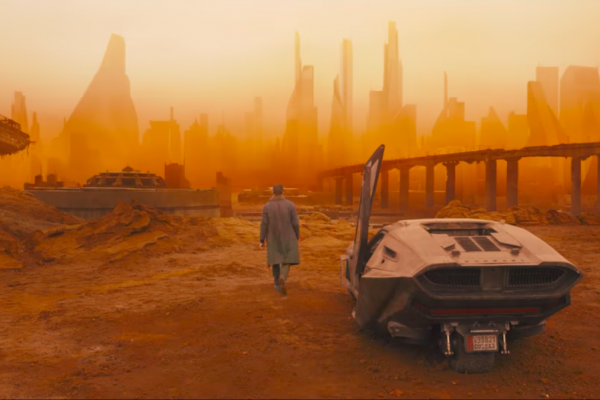From its inception, the word “robot” has been synonymous with “slave.” The term was coined by the Czech writer Karel Čapek in 1921, derived from the Czech word for “forced labor.” Robots in science fiction frequently struggle to be treated as equal to humans, sometimes to fighting back against their human oppressors.
The synthetic human replicants of Blade Runner 2049, the new sequel to Ridley Scott’s 1982 classic Blade Runner, are made to be expendable and compliant, for jobs as farmers, sex workers, or beat cops. The slogan of the first film’s replicant-producing Tyrell corporation was “more human than human,” but in both films, the replicants themselves are treated as anything but. They are, like their metallic ancestors, slaves.
Blade Runner 2049 is a gorgeous, evocative film that contains plenty of ideas about the way we interact with technology and the nature of the soul. It also contains strong elements of a liberation narrative that would feel empowering but for one aspect: none of its participants are people of color.
The hero of the film is K (Ryan Gosling), a cop living in Los Angeles years after environmental destruction left the rest of the country uninhabitable. Those who can afford to now live on off-world colonies, staffed by replicants. Like Harrison Ford’s Rick Deckard before him, K hunts down and “retires” (read “kills”) older, non-compliant replicant models still hanging around Earth. While hunting down one of them, K unearths a mysterious box. The contents of this box contain a potentially game-changing discovery — a new future for the replicants, a revenue source for mogul Niander Wallace (Jared Leto), and a potential threat to humankind.
Nearly all of the characters K encounters (human and replicant alike) are white. This is in stark contrast to the globalized aesthetic of the city, carried over from the original movie. It could be argued that in a world where a white man like Leto’s Niander Wallace is the one person creating a sizable chunk of the population, it’s not surprising that the creations themselves lack diversity. However, the reality for the film’s casting decisions is likely less about artistic interpretation, and more just plain laziness.
It’s a disappointing blemish on an otherwise engaging movie. Arrival director Denis Villeneuve’s sensibilities are a perfect match for the material. Cinematographer Roger Deakins creates amazing monochromatic shots that each stand alone as works of art. Benjamin Wallfisch and Hans Zimmer’s droning score beautifully evokes the original film’s soundtrack.
But the diversity issue that plagues Blade Runner 2049 is a particular letdown because of the potential of the story it’s telling. In a climate of travel bans, white supremacist marches and an uncertain future for DACA recipients, we need stories that remind us of hope in the face of abject darkness. Blade Runner 2049 contains that hope, but through its lack of diversity, the story loses its teeth. Liberation doesn’t have quite the same effect when it’s done by white people, for other white people.
Got something to say about what you're reading? We value your feedback!

